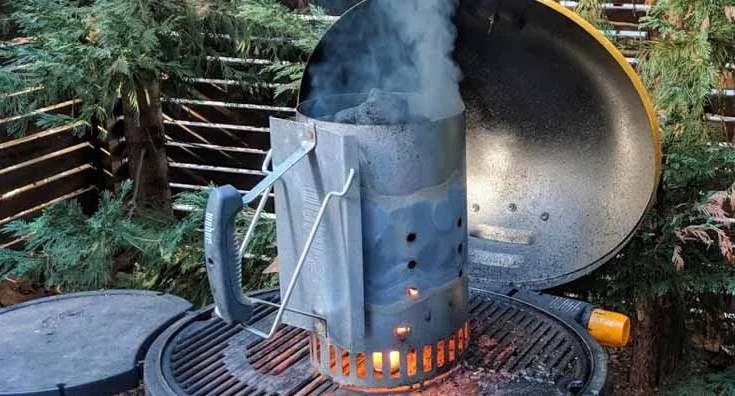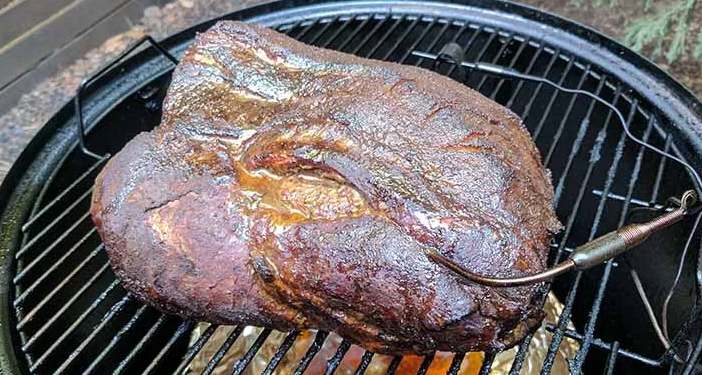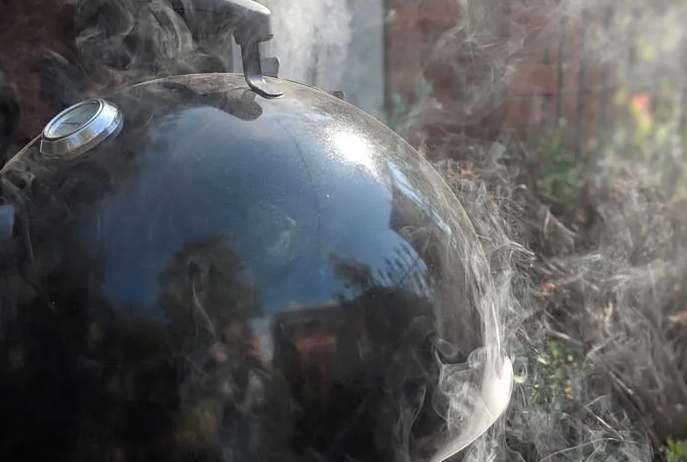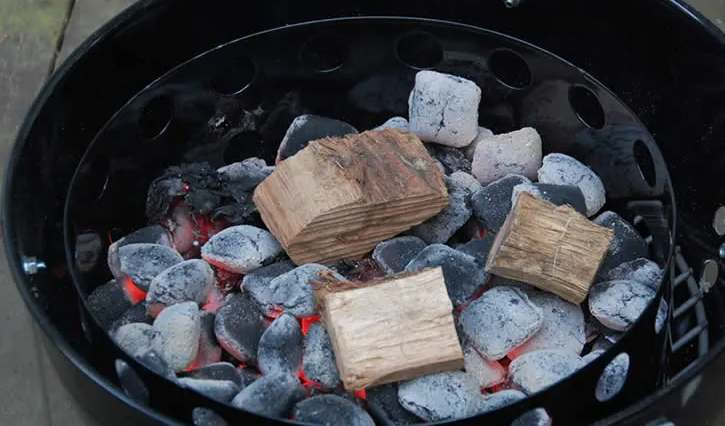Smoking meat should be fun, but if you’re just getting started it can feel like there is way too much you have to learn.
This can get stressful when your guests start to arrive just when everything is going wrong.
Next thing you know your friends are all “out of town” every time you host a BBQ.
It’s a lot more fun if can get some practice in and watch out for these common mistakes that almost everyone makes.
When you’ve smoked some pork butts, chicken and tried your hands at a brisket and everything’s coming together then invite the whole gang over and wow ‘em with your smoking skills.
In the meantime learn from the smoking mistakes of others and share any mistakes you’ve made in the comments below.
1) Using the wrong cut of meat.
It can be tempting to just grab the cheapest cut from the meat section in your nearest chain supermarket and start smoking.
But if you want to produce delicious pulled pork, ribs or brisket , you MUST start with the best quality you can afford.
The fix:
Your local butcher is your best friend. Tell your butcher exactly what you are looking for. This will very depending on what you plan on smoking.
This is a huge topic on it’s own but some important things to look out for are:
- Ribs – You want to look for good meat coverage over the bone and avoid too much surface fat. If you can avoid buying frozen.
- Brisket – Try and get a whole packer brisket with nice marbling and white, hard fat about 1/4″ to 1/3″ (0.6cm – 0.8cm) thick over the entire flat portion.
- Pork Butt – While a bit more forgiving than brisket, for best results look for the large “money muscle” at the opposite end of the bone.
“Look at the opposite end of the bone. It’s tube shaped (with striations and stripes). You’ll see the bands of fat evenly spaced along the muscle. When fully cooked that fat should easily melt away and render.”
Bill West – Barbecuetricks.com
2) Using lighter fluid to start your charcoal briquettes.
This is one of the most common barbecue mistakes amateurs make. I get it! You’re impatient and want to start cooking RIGHT NOW.
Before you douse your charcoal in lighter fluid understand that this can give off some really awful odors and create a funky taste in your smoked meat.
Not to mention this going against the whole point of low and slow cooking!
The fix:
A quality chimney starter is one of the best investments you can make. You can pick up a Weber Chimney Starter from Amazon.
Lighter cubes work well, but all you need is a few bunched up paper towels.
Place them on the bottom grate of your grill, fill the chimney with coals then set it down on the grill and light the paper towels.
You should see smoke curling up and be able to feel heat.
Make sure you keep a close eye on it and within 20 minutes you should be good to go. If you’re not sold on a chimney starter then check out our guide to the best tools for light charcoal.

3) Not controlling the temperature inside the grill
Good barbecue requires a steady, low heat over a long period of time.
A common mistake is exposing the meat to too high a heat, resulting in dry tough meat.
The fix:
Getting this right can take a few attempts but you want to try and keep the temperature between 225-250°F (107 – 121°C).
Controlling your smoker temperature depends on the type of smoker you are using.
You control temperature on a charcoal smoker by opening the vents or intake dampers to increase the temperature, and closing the vents to decrease oxygen flow and lower the internal temperature.
It’s important to get the smoker stabilized before adding your meat.
Let it sit for 15 to 20 minutes with a thermometer away from direct heat until the temperature stabilizes and only then add your meat.
To keep everything under control you’ll need to get a good thermometer setup with a probe to measure air temperature, and another to measure the temperature of the meat.

Finally it’s important to keep a full water pan in the barbecue chamber to absorb heat and help moderate the temperature. Over a long cook the water can evaporate so keep checking and refilling every 3-4 hours.
4) Over adjusting your grill setup
Picture this scenario.
Your on your first smoke and everything is going well. You used a charcoal chimney to get your coals nice and ashed over and you’ve got your cooking zone and drip pan setup.
You start imagining how that succulent pork butt is going to taste and then your notice the temperature start to shoot up.
In a panic you lift the lid, open the vents and keep making wild adjustments until the temperature drops.
You had the right idea but keep completely overshooting the mark.
The fix:
When you see the temperature start to flare up it can be stressful but you shouldn’t panic.
Avoid trying to adjust too many things at once or you can easily over-correct.
Change one thing, see what happens, then change another.
If you are smoking on a Weber kettle or similar setup make sure you avoid completely closing the top and bottom vents as this can choke the fire.
You should also avoid opening the lid too often. The key is to holding a steady temperature is to only make small adjustments.
5) Having a few too many drinks while you barbecue
Spending time outside while downing a few cold ones is one of the best things about smoking.
But don’t be surprised if by the 6th beer your constant supervision starts to relax.
It doesn’t take long before the heat gets way too high and 12 hours and 9 pounds worth of brisket turn into an inedible hunk of jerky.
If you’re really unlucky the combination of meat fat, hot fuel and airflow could combine to cause an epic grease fire.
If you’re really smart you could even find yourself the star of a viral video.https://youtube.com/embed/iUtk1B119-0?feature=oembed
The fix:
Maintaining an internal temperature of 225-250°F (107 – 121°C) can require close supervision over a long time.
Go ahead and enjoy a few beers but especially if this is your first time remember to stay focused and maybe leave the bourbon until after you’ve carved up.
6) Too much smoke
Probably the most literal smoking mistake and the one I get the most emails about.
If a little smoke makes meat taste delicious then a lot of smoke must make it taste freaking amazing, right?

Unfortunately this logic can result in some pretty atrocious barbecue.
Using too much wood is one of the biggest rookie BBQ mistakes.
You can make matters worse by closing the vents to hold more smoke in. This is a sure fire way for your meat to end up straight in the trash.
The fix:
Smoking is definitely a case of less is more.
You want to see thin whips of smoke coming out of the grill.
The right amount of wood depends a lot on the type of grill you are using. On a Weber Smokey Mountain you only want to use a few fist size chunks of smoke wood.
A good rule of thumb is to use about two ounces of wood and adjust from there.
Always keep the inlets and exhaust dampers at least slightly open and be careful how you close the inlet damper or the fire could smolder and give off some bad tasting smoke.
If the smoke smells bad the meat will taste bad too.
7) Not giving yourself enough time
Not allowing yourself enough time is a big mistake that can cause you to start making lots of other mistakes.
When the clock is ticking away and the guests are on the way you might think it’s a good idea to close the vent to hold more smoke in, or start adding more coals on the fire.
The fix:
Barbecue takes preparation time and patience.
You can’t rush, and because every piece of meat is different it’s difficult to accurately estimate the length of cooking time.
We have put together a chart of cooking times and temps for all the most common types of meat.
While some people argue that if you start cooking in the smoker you should finish in the smoker if it’s getting dark and you’re running out of fuel you can always resort to the “Texas cheat”.
This method of cooking involves you smoking the meat for a few hours before wrapping it in foil, sometimes with juice, and then finishing it in the oven at 325°F (160°C) for a few hours.
8) Panicking during the stall
If you’re on the impatient side then waiting around for the meat to hit the perfect temperature for tender barbecue can be frustrating.
If you’ve ever smoked a brisket or pork shoulder chances are you’ve experienced the dreaded “stall”.
When the temperature on the thermometer decides it doesn’t want to change for hours at time.
Don’t make the newbie mistake of getting impatient and increasing the heat. Remember that we are aiming for succulent meat, not a pot roast.
The fix:
There are many theories around the stall, ranging from moisture leaving the meat, slow rendering fat or the protein breaking down.
If you want to geek out we have a full article explaining the science of the stall but the best advice is not to panic, keep the temperature stable and eventually the temperature of the meat will start to slowly climb.
Something this delicious wouldn’t be possible without some challenges!
9) Opening the grill lid to peek too often.
After selecting the right piece of meat, preparing it and then getting your barbecue and coals ready your excitement levels are at an all time high.
But by continuing to open the lid you are letting out the heat and the smoker will be below temperature.
The fix:
The meat’s not going anywhere! Your thermometer should tell you all you need to know to make any adjustments.
Open the lid only when necessary to apply a mop or spritz, or to move the meat or tend to the coals. You don’t need to keep checking up on it.
The size of this mistake does depend on what you are smoking with, and some peaking should be OK.
Be extra careful about over peeking if you’re smoking on a Weber Kettle though:
“The effect of opening the lid on a charcoal grill like the Weber Kettle is greater than on gas or pellets because the heating potential of charcoal is limited. It eventually diminishes and burns out. So you are not only losing cooking time, you are losing cooking time at a higher temp.”
Meathead Goldwyn, Amazingribs.com
10) Trusting the thermometer on a dome smoker
The hood thermometer will lie to you.
Most BBQ grills and smokers come up a “handy” dial installed on the dome.
They are almost always cheap and because they are positioned near the top of the lid it records the temperature of the air space above the food you are cooking.
The fix:
Ignore the inaccurate built in smoker.
The best way to monitor the internal temperature is to invest in a digital dual probe thermometer.
This allows you to measure the temperature of your grill and your food at the same time.
11) Choosing the wrong type of wood.
Obsessing over what type of wood to use for smoking can result in family and friends rolling their eyes.
Matching wood “flavor profile” for different foods is definitely not required. Some even consider the whole concept “wishful thinking“.

That said it’s important to get the basics right by using the right types of wood.
The fix:
Learning what type of wood goes best on your smoker, and what types of wood should be avoided is a good first step.
In terms of wood type, fruit woods like apple and cherry are always a safe choice. You can also experiment with oak, hickory and mesquite.
.jpg)
You should avoid any painted or treated wood, as well as pine, fir, cedar or cyprus.
12) Not treating your finished meat with the respect it deserves
After all those hours of work and waiting I understand the desire to start hacking away.
But not allowing enough time to rest or slicing with the grain can ruin what would otherwise be a delicious piece of meat.
The fix:
From around the 7:10 mark Aaron Franklin explains how long to let your brisket rest, and some good tips for slicing your brisket.
The key is to slice against the grain of the meat, aiming for an optimal thickness for a slice of brisket of a No. 2 pencil.
Everyone makes mistakes when learning to barbecue.
Even the most experienced cooks can probably tick off more than one of these mistakes. Hopefully you can learn a few things to avoid but don’t get discouraged if your barbecue isn’t perfect first time.
Do you agree with this list? I’d love it if you could share the biggest smoking mistake you’ve ever made in a comment below.